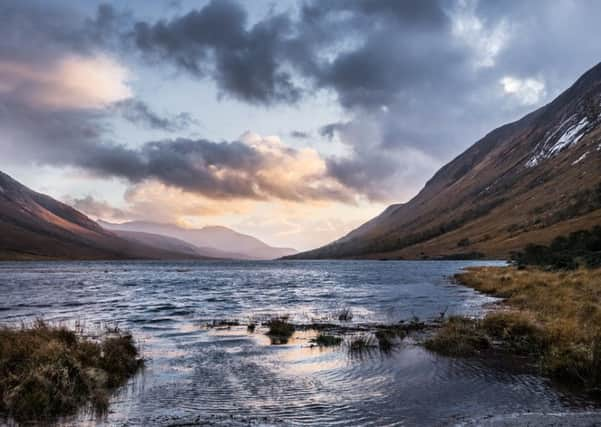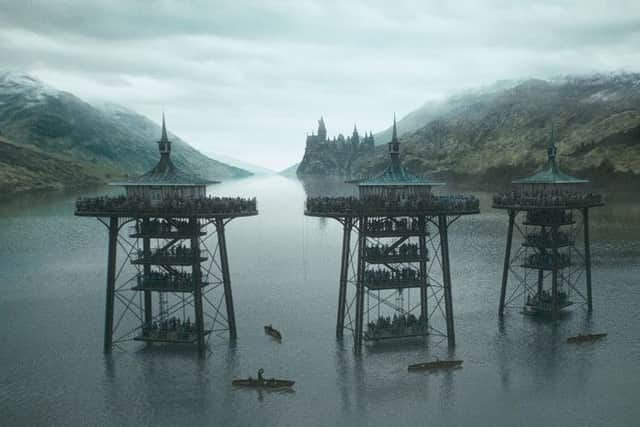A Harry Potter fan's guide to Scotland


Harry Potter has many ties to Scotland, both through the books and the films.
Author JK Rowling found inspiration for her wizarding world around her adopted home city of Edinburgh, and the Scottish Highlands provided the perfect filming locations once the books were brought to the big screen.
Advertisement
Hide AdDie-hard Harry Potter fans can make the pilgrimage to many magical sites around Scotland – from travelling on the real Hogwarts Express to shopping on the street that inspired Diagon Alley.


Edinburgh
Back in the mid-1990s, JK Rowling was living in Edinburgh and - as the legend goes - frequented some of Edinburgh’s cafes to avoid spending money on heating her flat as she wrote Harry Potter and the Philosopher’s Stone.
The Elephant House proudly claims to be the ‘Birthplace of Harry Potter’, where the series was dreamed up over coffee and cake.
The toilets in the cafe have become a shrine to the world of Hogwarts, with fans leaving Harry Potter graffiti all over the walls.


Whilst it’s true that Rowling did visit The Elephant House to write, nearby cafe Spoon perhaps has more of a right to quote the ‘birthplace’ claim.
It was in Spoon (or Nicolson’s Cafe as it was known then) that the now world famous author wrote the majority of the first Harry Potter novel.
Advertisement
Hide AdThe cafe was owned by Rowling’s brother-in-law, so she could spend hours nursing a cup of coffee and drafting up chapters of the book without being disturbed.
Nearby, fans can find the inspiration for Hogwarts, Diagon Alley and He Who Must Not Be Named all within Edinburgh’s Old Town.
Advertisement
Hide AdThe imposing castle-like façade of George Heriot’s School - with four turrets and a quadrangle - has obvious architectural similarities to the wizarding school of Hogwarts.
Heriot’s also has four houses which pupils belong to, and it’s likely that Lauriston, Greyfriars, Raeburn and Castle partially inspired Gryffindor, Slytherin, Hufflepuff and Ravenclaw.
Behind the school is Greyfriars Kirkyard, which Rowling was known to take a stroll through when taking a break from writing.
One grave in particular is of interest to Harry Potter fans - that of Thomas Riddell Esquire who lent his name to Tom Riddle, who later adopted the alter-ego of Voldemort.
Other familiar names can also be spotted in the cemetery, such as William McGonagall and Elizabeth Moodie who may be the real-life versions of Professor McGonagall and Mad-Eye Moody.
Although it has never been confirmed, it’s possible that Rowling found the inspiration for the main character’s name whilst walking around Edinburgh.
Advertisement
Hide AdPotterrow Port is part of the University of Edinburgh, where Rowling studied during 1995, and may have subconsciously inspired Harry Potter’s name.
Fans looking for Diagon Alley should go for a walk up the winding, cobbled Victoria Street.
Advertisement
Hide AdThe street is home to lots of higglety-pigglety old buildings and shops, just like the wizarding version. In the Nineties, Victoria Street even had a Royal Bank of Scotland and a stationery shop in approximately the same position as their magical counterparts, Gringotts and Flourish & Blott’s.
For those who want to get a true feel for JK Rowling’s Edinburgh, fans can stroll down some of the streets she lived on.
When she first moved to Edinburgh - with the first couple of chapters of The Philosopher’s Stone in her bag - Rowling stayed with her sister in a flat on Marchmont Road, before moving to Gardner’s Crescent and then South Lorne Place.
These little flats and coffee shops are a far cry from where the author ended up finishing the series of books. Rowling stayed at The Balmoral Hotel to finish writing the Deathly Hallows, which was completed in 2007.
The suite she stayed in has been renamed in her honour, and still includes her writing desk and a marble bust of Hermes which she signed upon completion of the book.
A night in the JK Rowling suite will set you back over £1,000.
Advertisement
Hide AdThe author has also been immortalised in Edinburgh’s version of the Hollywood Walk of Fame. Her handprints can be seen in the quadrangle of the City Chambers, along with other famous Edinburghers like fellow author Ian Rankin and cyclist Chris Hoy.
West Highlands
Although it’s never made clear in the books, JK Rowling has stated in interviews that she always imagined Hogwarts to be located in the remote Scottish Highlands, surrounded by lochs and rugged mountains.
Advertisement
Hide AdIt’s no surprise, then, that many of the filming locations from the Harry Potter movies can be found in the West Highlands.
Both Loch Shiel and Loch Morar were used as the Hogwarts Lake. The former you’ll recognise from wider shots, and the latter was used for close-up scenes throughout the film series.
Also in the grounds of Hogwarts is Hagrid’s Hut, which in real life was located in Glencoe. A replica of the building was created at Torren Lochan during the filming of the Prisoner of Azkaban.
Unfortunately, the hut itself is no longer there but the surrounding scenery will look familiar to Harry Potter fans.
Glencoe was also used as the backdrop for several scenes from the third film onwards, most notably when Hermione Granger (satisfyingly) punches Draco Malfoy in the face.
Lochs feature prominently in the scenery of the wizarding world, so it’s no surprise that Dumbledore’s final resting place is on a beautiful little island surrounded by Highland scenery.
Advertisement
Hide AdIt’s actually made up of a combination of two lochs – the island Eilean na Moine is found on Loch Eilt in real life, but it was digitally added to the more dramatic-looking Loch Arkaig for the films.
One of the most iconic images in the Harry Potter films is the Hogwarts Express travelling over the Glenfinnan Viaduct on its way to the school.
Advertisement
Hide AdYou can even book a journey on the muggle version of the Hogwarts Express, the Jacobite Steam Train, to experience the same route as Harry and co. Sadly there won’t be any Chocolate Frogs or Bertie Bott’s Every Flavour Beans on the trolley, but the magical scenery outside will make up for it.
The Hogwarts Express also passes through Rannoch Moor near Corrour station. This area of rugged wilderness was where the Death Eaters boarded the train in the Deathly Hallows Part 1 film.
Steall Falls in Glen Nevis is another location worth visiting if you want to emerge yourself in the wizarding world. This impressive waterfall and the surrounding scenery can often be seen in the background during Quidditch matches.
Steall Falls – along with Black Rock Gorge - was also where Harry battled the Hungarian Horntail dragon during the Triwizard Tournament in the Goblet of Fire film.
Harry Potter fans can also make the pilgrimage to Glen Etive, another beautiful filming location mainly used in the Deathly Hallows films.
The northern banks of Loch Etive is the real-life setting for Harry, Ron and Hermione’s camping trip.